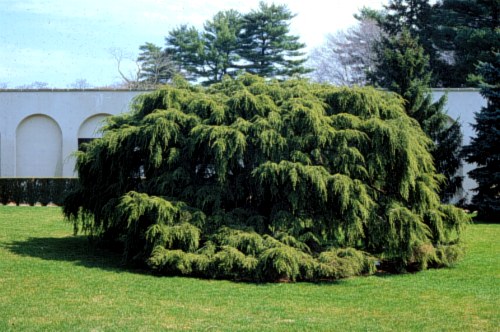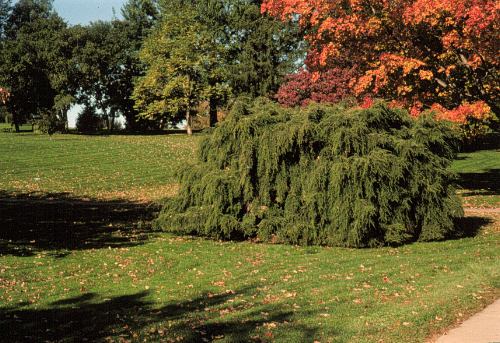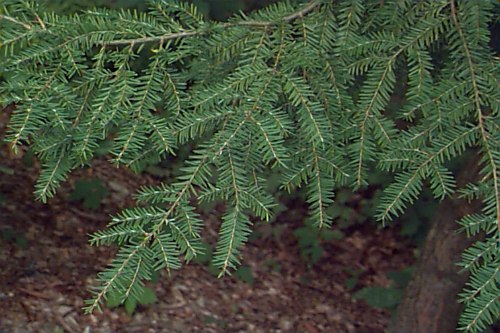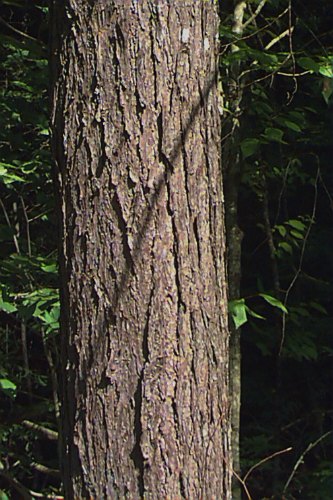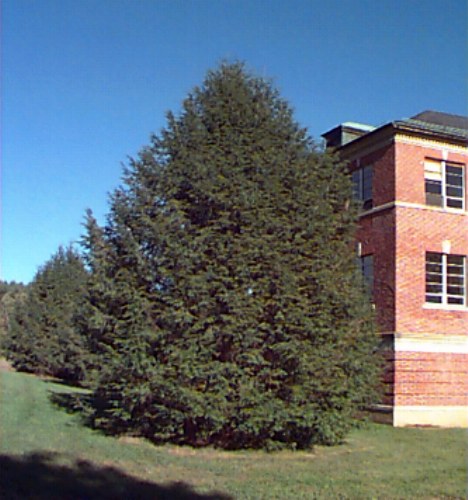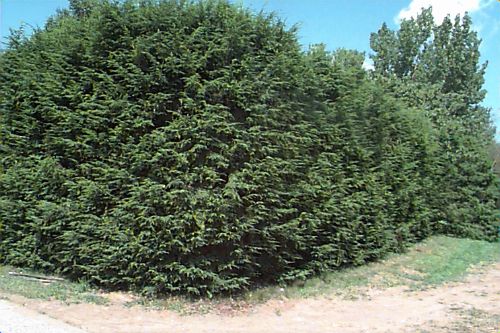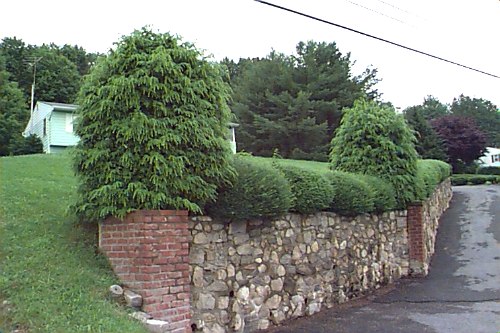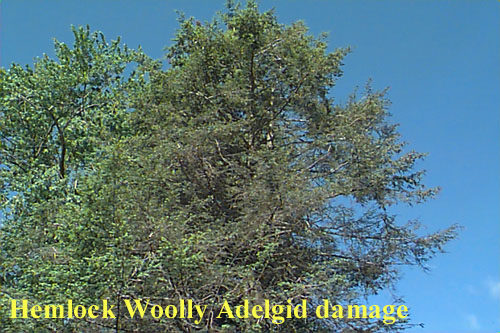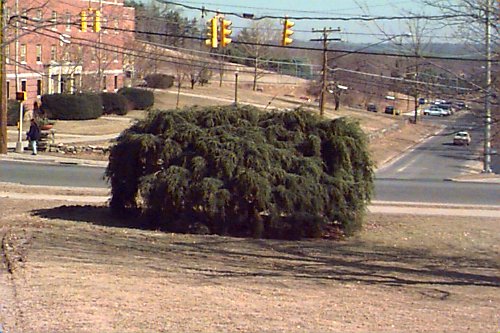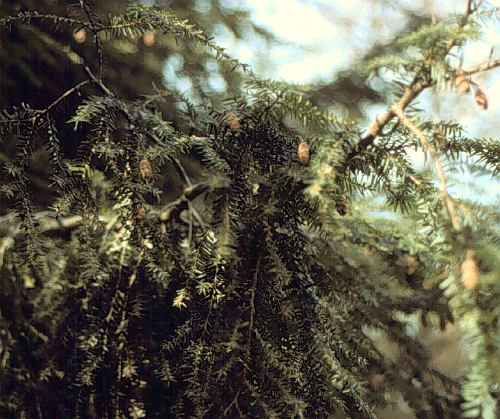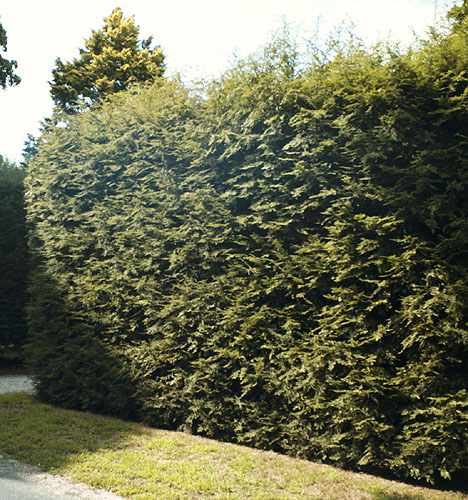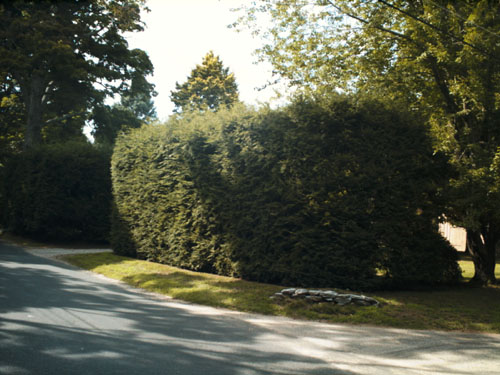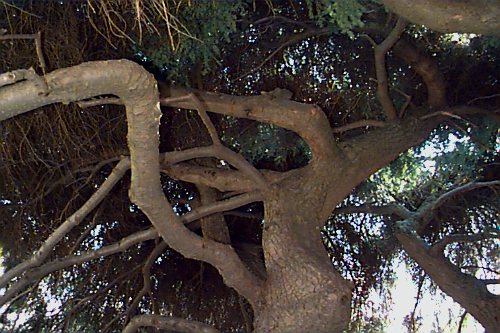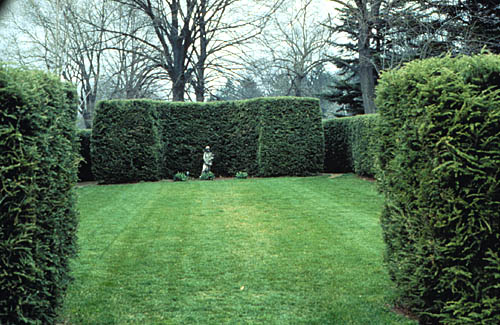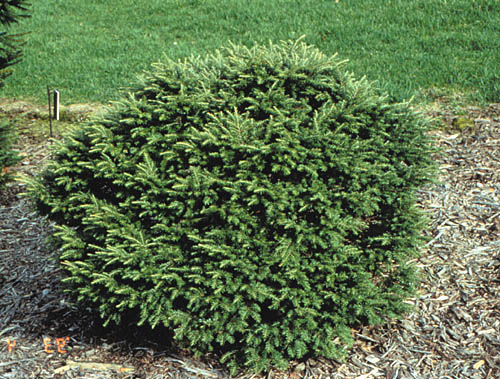Tsuga canadensis
Canadian Hemlock, Eastern Hemlock
Pinaceae
ExpandHabitat
- native to eastern North America
- typically found on northern and eastern slopes with cooler, moister environmental conditions
- zone 3
Habit and Form
- a needle evergreen
- medium to large tree
- 40' to 70' tall, but can grow larger
- conical or pyramidal shape with a 25' to 30' spread
- soft, graceful, horizontal to pendulous branches
- fine texture
Summer Foliage
- leaves are spirally arranged, but are held in a 2-ranked fashion
- needles are flattened
- needles are 0.25" to 0.75" long and about 0.10" wide
- new foliage is dark green above with 2 whitish bands on the underside
- leaf margins minutely serrulate
- shoots pubescent
Autumn Foliage
- evergreen, no fall color
Flowers
- monoecious, with male and female flowers
- small and not ornamentally important
Fruit
- small cones, about 0.5" to 1.0" long
- turning light brown in the fall
- can be borne in large numbers
Bark
- overall brown color
- bark changes from smooth, to flaky and scaly, and finally to wide flat ridges with age
Culture
- best growth on cool, moist, well-drained soils
- transplant from containers or B&B
- avoid dry soils and hot locations
- dislikes very windy sites
- full sun or partial shade is best
- tolerant of relatively heavy shade
- can be pruned heavily in the spring for hedging
Landscape Use
- lawn tree
- specimen
- can be sheared to form an effective screen or hedge
- excellent evergreen for screening use in shaded locations where most needle evergreens fail
- in groves or small groupings
- dwarf forms as rock garden plants, accent plants or foundation plants
Liabilities
- not tolerant of pollution
- not tolerant of salt spray
- spider mites
- deer like to browse the foliage or rub off the bark with their antlers
- not tolerant of heat or drought
- hemlock wooly adelgid is a new and devastating insect pest that can be easily controlled, but left unchecked can kill large plants in 3 years
ID Features
- pyramidal, medium-sized, needle evergreen tree with horizontal to pendulous, graceful branches
- short flattened needles
- needles held in 2-ranked fashion
- T. caroliniana, with which T. canadensis is often confused, has more of its needles spirally distributed around its shoots
- shoots pubescent
- has minutely serrulate leaf margins, while T. caroliniana has smooth margins
- twigs roughened by persistent leaf bases remaining after needles fall
- numerous, small cones
Propagation
- by seed
- cultivars are grafted
Cultivars/Varieties
Dozens of hemlock cultivars are known in collection, but those presented below are commonly offered and offer a glimpse at the diversity available.
'Albospica' - This compact plant has bright white new growth and benefits from light shade. 'Gentsch White' is similar, forming a rounded compact plant to 4' tall and wide. The tips of the branches are silvery on this plant.
'Aurea Compacta' (also known as 'Everitt's Golden') - This smaller form grows stiffly upright, but it is chiefly notable for its bright gold foliage. 'Golden Splendor' is an upright-growing form with golden foliage that grows quickly in the landscape.
'Cole's Prostrate' - Originally found in New Hampshire, this is a true prostrate form that creeps along the ground and spreads widely. It appreciates light shade.
'Curly' - A very unusual form, this plant features congested branches bearing needles which curl around the stems.
'Horsford Contorted' (also known as 'Pig Tails') - Another addition to the limited list of small trees with contorted growth, this selection offers branches that are coiled and twisted. It forms a small tree at maturity and is a good conversation piece when well placed in the garden.
'Jeddeloh' - One of the more popular cultivars, this plant forms a small mound of layered branches. The plant tends to have a depression in its center, thus many observers refer to this selection as the "Bird's Nest Hemlock".
'Minuta' and 'Pygmaea' - These are micro-miniature rock garden curiosities discovered in Vermont. They form dwarf buns of dark green needles that only increase at the rate of .25"-.5" per year.
'Sargentii' (also known as f. pendula and 'Pendula') - The most common cultivar available and one of the most handsome, this selection is a large weeping tree that may reach 15' tall and twice as wide. The weeping branchlets are held aloft by thick stems, giving this sturdy weeper a graceful appearance. The needles are dark green and the plant usually forms cones.
'Watnong Star' - Discovered in New Hampshire, this rounded compact plant features foliage that is frosted with white, especially on new growth.
